Yes, protein is crucial for building muscle.
It’s the cornerstone, the building block your body craves to repair and grow those precious muscle fibers.
But here’s the key: protein is just one piece of the puzzle.
While it reigns supreme in the muscle-building kingdom, it doesn’t rule alone.
To achieve your physique goals, you’ll need a well-rounded strategy that incorporates a calorie deficit for weight loss alongside a protein-rich diet.
We’ll be exploring and helping you find your personal protein sweet spot, and providing delicious protein-packed food options.
The Magic of Protein in muscle building while losing weight

When it comes to building muscle while losing weight, protein stands as a cornerstone in your dietary arsenal.
But is it truly the most critical factor?
Let’s dive into the science behind protein’s muscle-building magic to uncover its significance.
Protein serves as the body’s primary building block, essential for muscle tissue repair and growth.
When you engage in resistance training or strenuous physical activity, microscopic tears occur in your muscle fibers.
Here’s where protein steps in as the hero of the story.
Through a process called protein synthesis, amino acids, the building blocks of protein, are utilized to repair these tears, making your muscles stronger and more resilient in the process.
But protein’s role doesn’t stop there. It also plays a crucial part in regulating hunger and promoting satiety.
Unlike carbohydrates or fats, Protein takes longer to digest, keeping you feeling full for extended periods.
This satiating effect not only helps manage hunger cravings but also aids in weight management by reducing overall calorie intake.
Finding Your Perfect Protein Balance
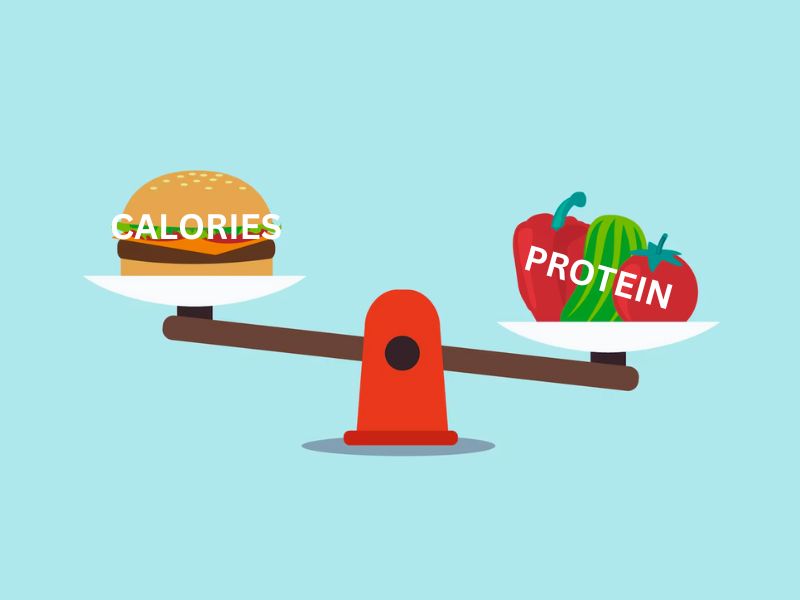
Understanding your optimal protein intake is essential for maximizing muscle growth, especially when aiming for weight loss.
Let’s dive into the details.
Firstly, the Recommended Daily Allowance (RDA) for protein typically hovers around 0.8 grams per kilogram of body weight.
However, for individuals engaging in muscle-building activities like powerlifting or resistance training, this number often falls short.
In a calorie deficit, where you’re consuming fewer calories than you burn, your body requires additional protein to support muscle repair and growth while shedding fat.
This increased demand for protein arises from the need to preserve lean muscle mass amidst weight loss.
A general guideline for protein intake during muscle building and weight loss ranges from 0.8 to 1 gram per pound of body weight.
However, individual protein needs may vary based on factors like age, gender, activity level, and overall health status.
To determine your specific protein requirements, consider using a protein calculator.
These handy tools take into account various factors to provide personalized recommendations tailored to your fitness goals and lifestyle.
By finding your protein sweet spot and ensuring adequate intake, you can optimize muscle growth, support fat loss, and achieve your desired physique more effectively.
Building Protein-Rich Plates
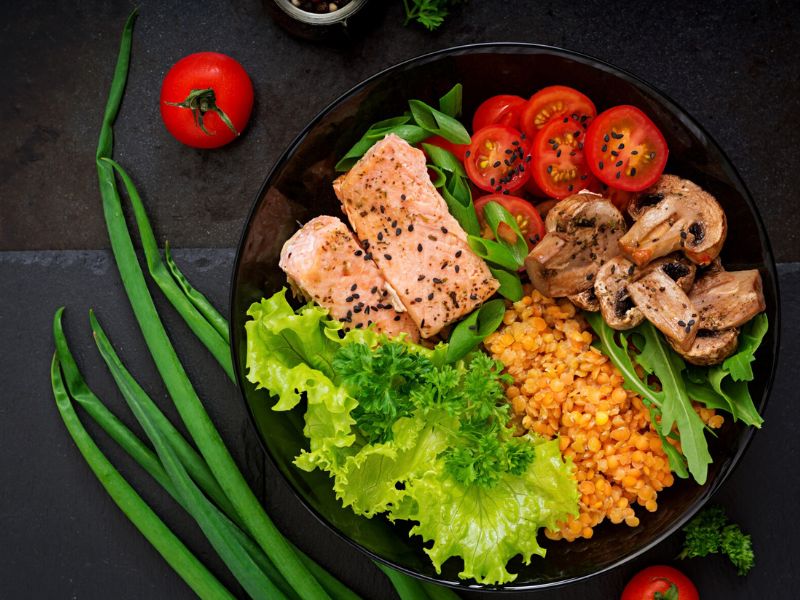
Now that you’ve discovered your protein sweet spot, it’s time to stock your pantry and fridge with delicious protein powerhouses.
Here’s a diverse list of protein-rich foods across various food groups to fuel your muscle-building journey:
Lean Mean Protein:
- Chicken: Grill it, tandoori-style, or enjoy it in a curry (Chicken Tikka Masala).
- Fish: Salmon, Rohu, or Pomfret – all great options.
- Eggs: Scrambled, boiled, or omelette style (anda bhurji).
- Lean Lamb: Grilled kebabs or in a spicy curry (Rogan Josh).
- Turkey: Ground turkey in kebabs or as a substitute for chicken in curries.
Dairy Delights:
- Paneer: Curries (Palak Paneer), stir-fries (Paneer Bhurji), or grilled skewers (Paneer Tikka).
- Dahi (Yogurt): Plain with fruit, raita dip, or buttermilk (chhaas).
Plant-Based Power:
- Dal: Masoor, Moong, or Tadka Dal – all protein and fiber-rich.
- Rajma: Enjoy them in a Rajma Masala curry.
- Chana: Chickpea curries (Chole) or Aloo Tikki (fritters).
- Tofu: Pan-fry, scramble, or add to curries.
- Sprouts: Add them to salads, stir-fries, or curries.
- Soy chunks: Perfect for adding to pulao, biryani, or gravy dishes.
- Mushrooms: Sauté them with onions and spices or add to pasta dishes.
- Soy milk: Use it as a dairy-free alternative in smoothies or breakfast cereals.
- Seitan: A meat substitute made from wheat gluten, ideal for stir-fries or sandwiches.
- Quinoa: A complete protein source, use it as a base for salads or in place of rice.
- Almonds: Enjoy them as a snack or add them to salads for a protein boost.
- Cottage cheese (paneer): Use it in salads, wraps, or as a filling for parathas.
- Green peas: Add them to curries, rice dishes, or salads for extra protein and fiber.
Making Protein a Priority on a Calorie Budget
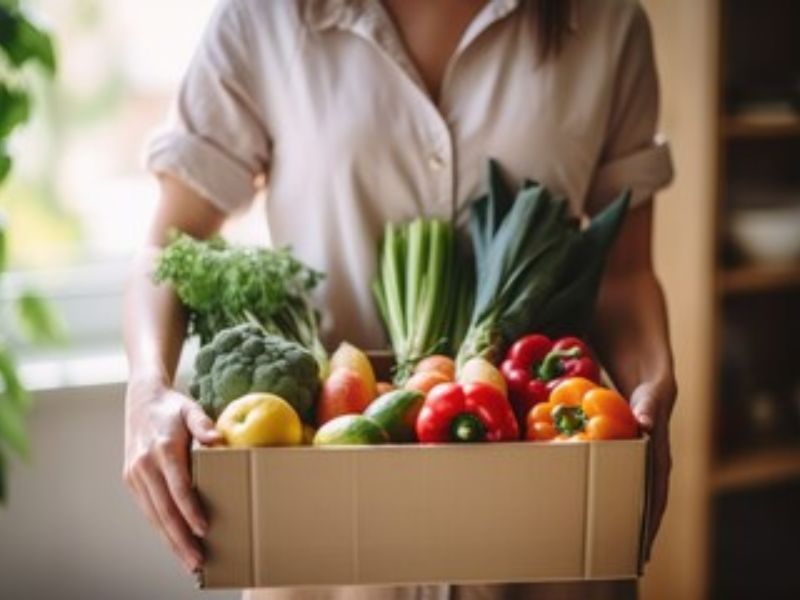
It can be hard to build muscle when you’re in a calorie deficit. But fear is not.
Here are some simple tips for prioritizing protein without breaking the bank:
The Power of Placement: Start with Protein
Protein is your building block. Here’s a simple yet effective strategy: start each meal with a protein source. This has a two-fold benefit:
- Satiety Signal: Protein is known for its satiating properties, meaning it keeps you feeling fuller for longer. By prioritizing protein at the beginning of your meal, you’re less likely to overeat later on, keeping your calorie intake in check.
- Thermic Effect of Food (TEF): Digesting protein requires more energy from your body compared to other macronutrients like carbs or fat. This translates to a slight increase in your metabolism, helping you burn more calories throughout the day.
Snack Smart: Protein-Packed Picks
Curbing those pesky cravings can derail your calorie goals. Here’s where protein-rich snacks come to the rescue.
Some delicious and budget-friendly options include:
- Greek Yogurt
- Nutty Goodness
- Hard-Boiled Eggs
- Cottage Cheese Power
- Edamame
Beyond Snacks: Protein-Packed Meal Ideas
Here are some meal ideas to inspire you:
- Breakfast: Scrambled eggs with spinach and whole-wheat toast, Greek yogurt with fruit and granola.
- Lunch: Chicken breast salad with mixed greens, lentil soup with a whole-wheat roll.
- Dinner: Baked salmon with roasted vegetables, tofu stir-fry with brown rice, chickpea curry with whole-wheat roti.
Does Protein Type Matter?
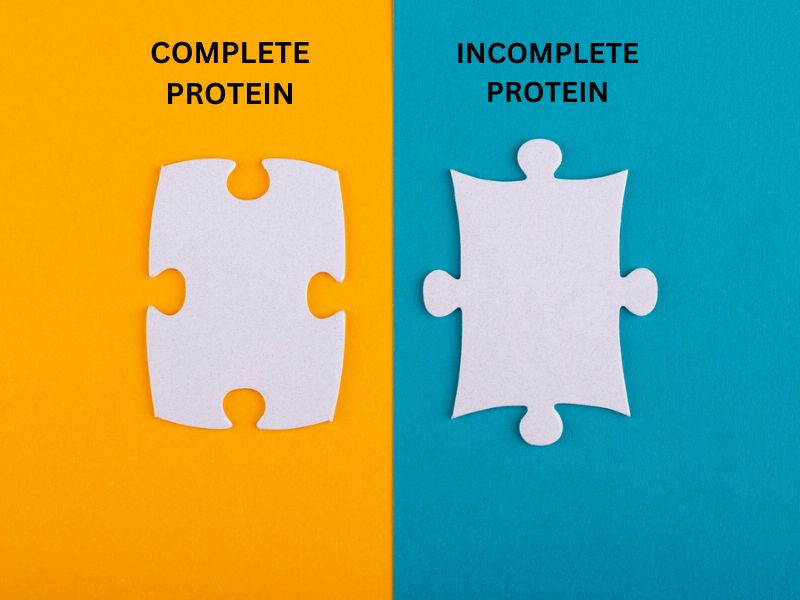
When it comes to protein, you may have heard debates about complete versus incomplete sources.
But does the type of protein you consume really make a significant difference in building muscle while losing weight?
Let’s delve into this concept to uncover the truth.
Complete vs. Incomplete Proteins:
Complete proteins contain all nine essential amino acids that the body cannot produce on its own.
These amino acids are crucial for various bodily functions, including muscle repair and growth.
Sources of complete proteins include animal products such as meat, fish, poultry, eggs, and dairy.
On the other hand, incomplete proteins lack one or more essential amino acids.
Plant-based sources like grains, legumes, nuts, and seeds are typically considered incomplete proteins.
However, by combining different plant-based foods, you can create complementary amino acid profiles, making them collectively complete.
For example, While lentils are rich in protein, they are considered incomplete as they lack certain essential amino acids.
To make them complete, pair dal with rice or whole grain roti or plate of salad, creating a complementary amino acid profile.
Conclusion
There you have it. Protein is undeniably crucial for building muscle while losing weight.
It’s the fuel that repairs and strengthens your muscles, keeping them sculpted as you shed fat.
However, remember, protein is just one piece of the puzzle.
For optimal results, you’ll need a well-rounded strategy that incorporates a calorie deficit alongside a protein-rich diet.
This article provided a roadmap to navigate your protein journey, helping you find your sweet spot and discover delicious protein sources.
We also explored the concept of complete vs. incomplete proteins and how to create a balanced diet that fuels your fitness goals.
Remember, every body is unique.
While this information equips you with valuable knowledge, consulting a healthcare professional or registered dietitian can personalize a plan that perfectly aligns with your individual needs and goals.
So, fire up that grill, whip up a protein-packed smoothie, and embark on your muscle-building journey with confidence.

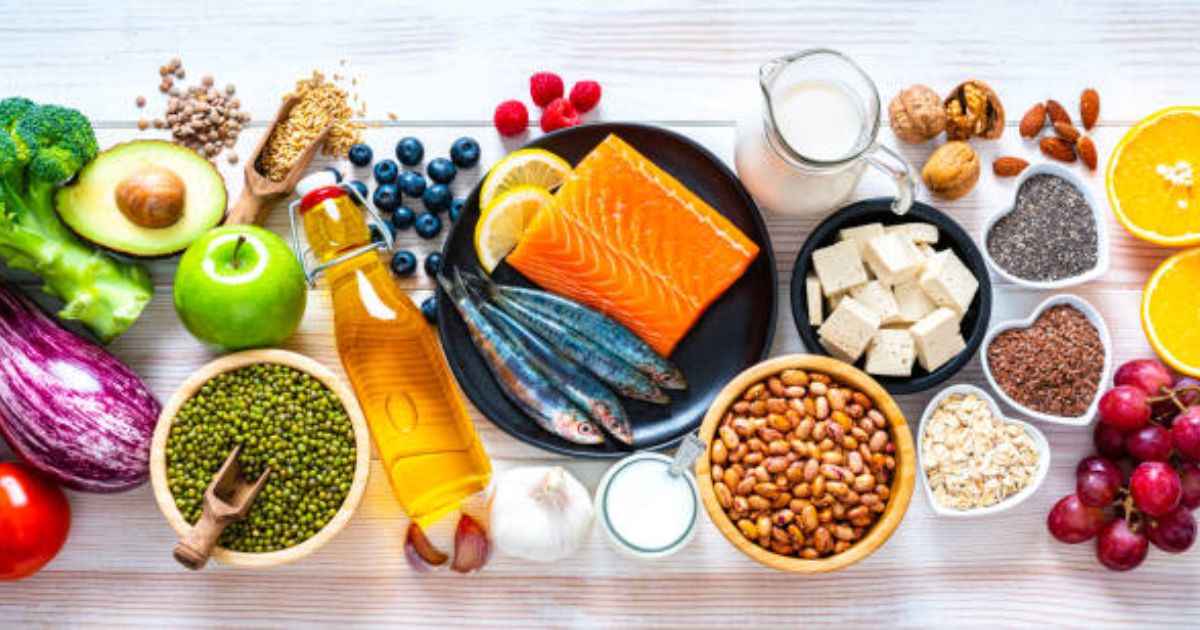
1 thought on “Should I focus on Protein for Muscle building While Losing Weight? ”